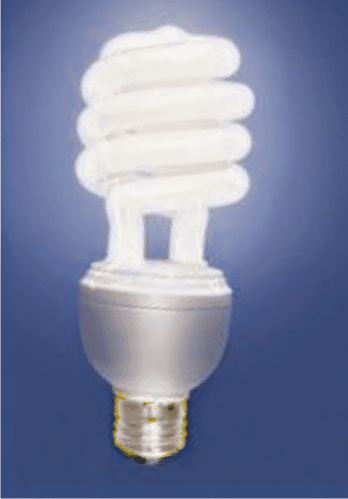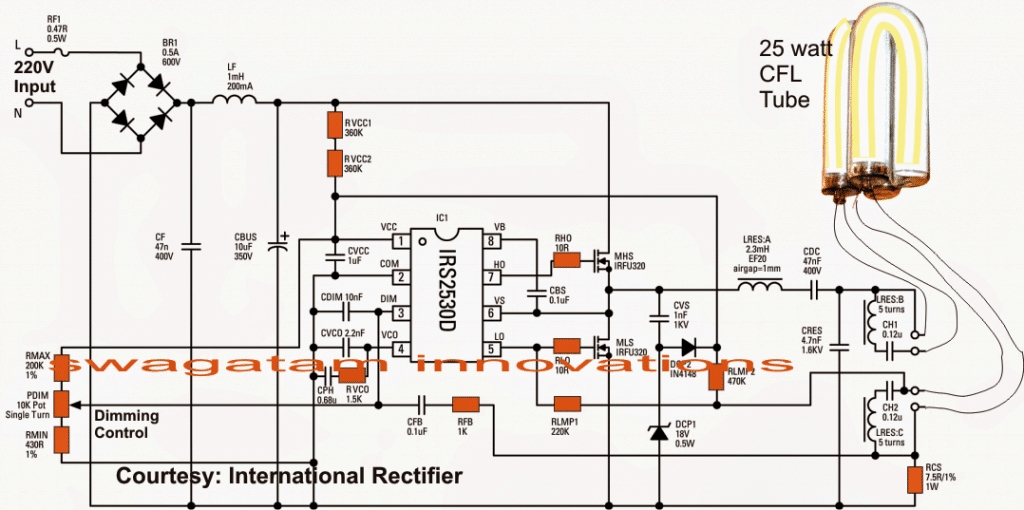In this post I have explained a simple 25 to 36 watt ballast circuit which can used for all fluorescent tube applications within the allocated range.

The circuit of the proposed electronic fluorescent ballast may be understood through the following discussion:
The Preheater Stage
The half-bridge stage comprising the two mosfets are triggered by the IC for initiating the required preheating of the tube filaments and for striking the tube into complete illumination.
An instant start is facilitated by the presence of RVCC1 and RVCC2 by providing the required start-up current to the positive line of the circuit.
The Charge Pump Circuit
In the meantime the charge pump section made by CSNUB, DCP1 and DCP2 takes control of the situation while the IC begins oscillating.
LRES and CRES form the resonant tank circuit and are responsible for generating a high voltage for the transition functions useful for the igniting the tube. It also helps to provide a low-pass filtering intended for the dimmable action of the tube.
You would also witness a DC blocking capacitor CDC intended to keep the lamp current at an AC potential which is important for preventing mercury merger and lamp blackening at the ends as a result. The feature ensures longer lamp life with great intensities.
LRES:A,B are the secondary winding inside in the resonant coil which are included for optimal preheating of the filaments and also for implementing the featured dimmable actions.
It also allows the use of a single resistor RCS for the required current sensing by extracting an isolated current supply from the filament source. This current sensed across RCS is applied to the DIM pinout of the IC via a feedback loop made by a resistor, capacitor network: CFB and RFB.
The Dimmer Stage
The dimming network includes a potentiometer control which essentially provides a varying reference voltage to the DIM pin of the IC enabling the dimming of the lamp to any desired level manually.
RLMP1 and RLMP2 are positioned for detecting the presence of the lamp that may be used at the output.
As soon as the lamp connection is detected by this stage the circuit initiates the above discussed functions, instantly illuminating the tube to its optimal intensity.
Ensuring 100% Ignition
In addition to the above, the IC IRS2530D has some outstanding in-built features such as 100% ensured ignition of the connected tube and a sustained constant illumination of the tube even under low voltage conditions from the mains input. Moreover all these are achieved by using very few number of components.
Thanks to International Rectifier for providing us with the discussed single chip electronic ballast circuit.
Circuit Diagram

